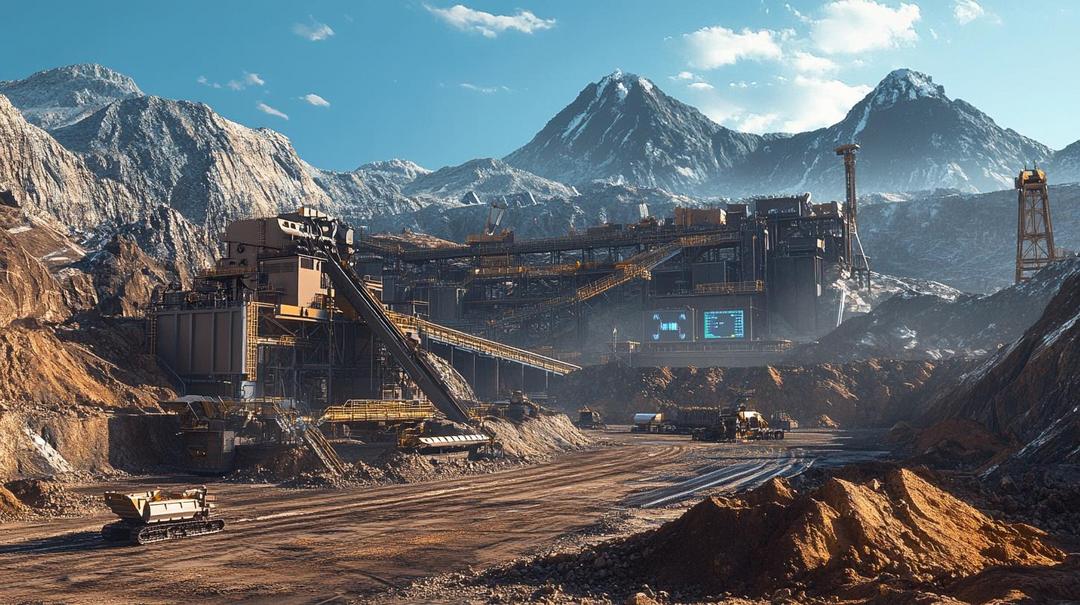Did you know that global demand for rare earths is expected to skyrocket by 9.7% annually through 2030? Yet, digging them out of the ground is a complex dance of balancing technology, sustainability, and geopolitics.
Here, we’ll analyze emerging mining innovations, assess global market trends, and unpack the future of rare earth elements. Regardless of where you’re at in the industry, you’ll better understand why the rare earth buzz is growing louder!
Let’s dig in!
What's Inside
What Is Driving Rare Earth Demand and Mining Innovation in 2024?
The global rare earth market is experiencing unprecedented growth, fueled by several key industries and technological transitions.
Market Demand Dynamics
- Electric vehicle (EV) markets are driving significant rare earth consumption, particularly for high-performance magnets in electric motors
- Renewable energy sector expansion requires substantial rare earth materials for wind turbine generators and energy storage technologies
- Consumer electronics continue to represent a consistent demand driver, with smartphones, laptops, and emerging tech consuming rare earth elements
Global Supply Chain Considerations
The race to secure rare earth supply chains has intensified as economies accelerate decarbonization efforts. Geopolitical tensions, especially between the United States and China, are reshaping traditional market dynamics. Current projections indicate a compound annual growth rate (CAGR) of 10-12% for rare earth element consumption across industrial sectors.
Emerging Innovations in Rare Earth Mining Technologies
Advanced Extraction Techniques
Technological innovations are transforming rare earth mining from an environmentally destructive process to a more sustainable approach:
- Hydrometallurgy advancements reduce chemical waste and environmental impact
- Robotic and AI-powered mining systems enhance operational efficiency and worker safety
- Solvent extraction technologies improve rare earth separation precision and yield
Recycling and Sustainable Approaches
- Urban mining of electronic waste emerges as a critical rare earth recovery strategy
- Biomining techniques utilizing specialized microbes offer environmentally friendly extraction methods
- Circular economy models prioritize material recovery and minimal environmental disruption
Rare Earth Mining Hotspots: A Global Perspective
Dominant Production Regions
- China continues to dominate global production, controlling over 70% of rare earth supply
- Australia’s Mount Weld mine represents a significant non-Chinese production center
- United States is revitalizing domestic production, particularly at the Mountain Pass mine
- African nations like Burundi and South Africa are emerging as potential rare earth suppliers
Geopolitical Landscape
Geopolitical factors significantly influence rare earth mining operations, with nations strategically positioning themselves to secure critical mineral resources.
Environmental Challenges and Sustainability in Rare Earth Mining
Environmental Impact Assessment
Rare earth extraction traditionally involves substantial environmental challenges:
- High water consumption
- Toxic tailing waste management
- Potential radioactive byproduct generation
Sustainable Solutions
- Zero-waste mining technologies
- Renewable energy-powered extraction facilities
- Global policy frameworks incentivizing environmentally responsible practices
Investment Opportunities in Rare Earth Markets
Market Potential
- Projected growth for critical rare earth elements like neodymium and praseodymium
- Emerging startups disrupting traditional mining and processing models
- Stock market trends and specialized rare earth element ETFs
Investment Considerations
- Supply chain complexity
- Price volatility
- Government subsidies and strategic investments
Innovations in Downstream Applications for Rare Earth Elements
Critical Technology Applications
- Electric vehicle magnetic systems
- Renewable energy wind turbine generators
- Aerospace and defense technologies
- Advanced medical imaging equipment
- Quantum computing and next-generation telecommunications infrastructure
The Future of Rare Earths: What’s Next?
Emerging Trends
- Increased demand from autonomous vehicle technologies
- Artificial intelligence computational requirements
- Space exploration technological needs
Forward-Looking Strategies
- Developing synthetic rare earth alternatives
- International collaborations to manage resource conflicts
- Diversifying global supply chains
Conclusion
Rare earth elements are central to the modern technological revolution, shaping industries from renewable energy to aerospace. Yet as demand soars, innovation will determine how we extract, process, and use these critical resources sustainably.
Keeping an eye on advancing mining technologies, global supply dynamics, and sustainable practices is crucial—not just for the industry but for the planet. Sign up for our newsletter to keep up with the challenges in the rare earth industry.
FAQs
What Are Rare Earth Elements?
Rare earth elements (REEs) are 17 chemically similar metals critical for advancing technologies like electronics, renewable energy systems, and aerospace applications.
Which Industries Are Driving Rare Earth Demand?
Key industries include electric vehicles, wind power, consumer electronics, defense, and medical technologies—all increasingly reliant on rare earths for high-performance applications.
Why Is Mining Rare Earths So Environmentally Damaging?
Rare earth mining generates substantial waste, uses toxic chemicals, and sometimes produces radioactive byproducts. However, sustainable practices and new technologies aim to reduce these impacts.
How Is Recycling Changing the Rare Earth Industry?
Recycling rare earths from e-waste, such as old electronics or EV batteries, offers a sustainable alternative to mining, reducing both environmental harm and supply chain pressures.
Are There Alternatives to Rare Earths?
Research into alternative materials, like ferrite magnets and synthetic substitutes, shows promise in reducing dependence on rare earths in certain applications, especially in magnets and renewable technologies.


Dustin
Driven by a fascination with rare earth elements and their role in powering modern tech and engineering marvels. A true car and tech enthusiast, he loves exploring how these hidden heroes fuel our most exciting innovations.
You Might Also Like…